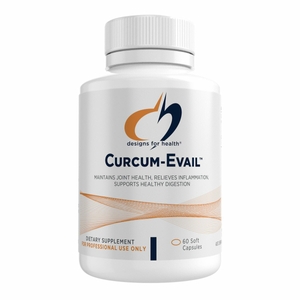
An estimated 456,000 Australians (1.9% of the total population) are living with a rheumatoid arthritis (RA) diagnosis (1). This condition is the most common autoimmune disorder in Australia (2).
Despite treatment advances for inflammatory arthritis, modern medicine has been unable to achieve remission of this condition (3), leading practitioners to look for a more functional approach to treatment.
What is Rheumatoid arthritis?
Unlike degenerative arthritis like osteoarthritis, RA is an autoimmune condition where the body’s immune system attacks itself mainly due to losing its ability to recognise self-proteins from non-self-proteins. It is suggested that T cells are a significant player in driving the immune system to induce inflammation, with later research also implicating B cell dysfunction and an abnormal interaction between the T cells and B cells as a leading cause of the pathogenesis of RA (2).
Other considerations in the aetiology of this condition include (4):
- Genetics - mainly involving the major histocompatibility complex class II antigens
- Infection - viral and bacterial infections causing upregulation of the immune system.
Risk Factors (4):
- Female gender - RA occurs more frequently in females than men, with approximately a 1:3 ratio
- High lectin diet
- Food allergy/intolerance
- Bowel dysbiosis
- Psychological stress
- Hormonal changes
- Smoking - a significant risk factor for RA.
Clinical guidelines for the diagnosis of RA (2):
- Morning stiffness in and around the joints, lasting for more than 30 minutes
- Tenderness and swelling of three or more joints, including the elbows, wrists, hands, knees or feet, present for at least six weeks
- Symmetrical involvement of metacarpophalangeal or metatarsophalangeal joints (both hands and feet)
- Positive blood test for rheumatoid factor and or anti cyclic-citrullinated peptides (anti-CCP)
- Other causes ruled out (e.g. infection).
Early Intervention
Antibodies for RA are known to be detectable for up to 10 years before symptoms occur; this gives us as practitioners a wide window of opportunity to test our patients who have genetic or environmental susceptibility (5,6).
Research is now emphasising that early intervention may delay or prevent the onset of this disease (7). This gives us an excellent opportunity to work with susceptible patients to implement lifestyle modification in true preventative medicine fashion.
A Functional Approach
A functional approach to RA involves looking at all the body systems and implementing lifestyle modifications.
A functional approach may involve (2,4):
- Balancing bowel microflora/ assessing intestinal permeability
- Balancing methylation and associated biochemical pathways
- Addressing disordered detoxification
- Reducing pain and inflammation
- Managing oxidative damage and oxidative stress
- Supporting joining integrity
- Supporting and modulating the proper immune response
- Reducing antigen exposure
- Supporting nervous system and adrenal health
- Managing diet and assessing nutritional status
- Modulating lifestyle factors.
Investigations
Investigations to undertake to get a clear picture of what is happening with your patient include:
- Rheumatoid factor test
- Anti-cyclic-citrullinated peptides (CCP antibodies)
- Intestinal permeability
- Stool analysis - The GI MAP is a good choice here
- Comprehensive blood chemistry panel - including Full blood count, Iron studies, liver enzymes.
- Inflammatory markers – C Reactive protein (CRP), Erythrocyte sedimentation rate (ESR)
- Methylation and genetic testing.
- Vitamin D – 25(OH)0 + 1,25(OH)2D
- Virus screening – Cytomegalovirus (CMV), Epstein Barr Virus (EBV) Human Immunodeficiency virus (HIV)
- Coeliac screening
- Imaging (referral) MRI to detect tissue erosion, damage to cartilage and bone. Ultrasound (doppler) may prove helpful in the diagnosis of RA.
Dietary Interventions
There are several dietary interventions you may wish to investigate to see which is best suited for your patient. Some interventions to consider are an anti-inflammatory diet, a diet rich in antioxidants, a low antigenic diet and fasting.
Some general dietary guidelines which may be helpful for patients are (2,4):
- Remove problematic antigens, namely casein and gluten
- Remove any known allergenic foods
- Minimise anti-inflammatory foods - refined carbohydrates, packaged foods
- Emphasise anti-inflammatory foods - cold-water fish, berries, ginger, olive oil, turmeric
- Emphasise antioxidant-rich foods - berries, green tea, fruits and vegetables
- Balance fatty acid intake, increase omega-3 fatty acids
- Alkalise tissues with green juices
- Increase probiotic and prebiotic foods e.g. garlic, onion, leek, asparagus, legumes, kefir, yoghurt, sauerkraut, miso and natto.
- Reduce nightshades which may inhibit the repair of collagen
- Maintain a healthy weight.
Nutritional Medicine
Digestive Enzymes
Enzymes can be beneficial for those with RA; digestive enzymes assist in the breakdown of foods and work to improve gut function. This is of particular interest for RA patients as many RA patients present with abnormalities such as altered antigen handling in the gut, elevated cross-reactive food antibodies and low stomach acid(2).
Furthermore, proteolytic enzymes (proteases) have been shown to have anti-inflammatory effects. Proteolytic enzymes reduce levels of inflammatory cytokines and the ensuing T cell response (8).
Proteolytic enzymes also play a role in the immune system, with research showing taking oral proteolytic enzymes decreases levels of circulating immune complexes and increases levels of the complement component iC3b (8).
Bromelain
Bromelain is an enzyme derived from pineapple that exhibits anti-inflammatory properties, with studies showing a reduction in tissue swelling after ingesting bromelain (2).
One of the suggested mechanisms behind the anti-inflammatory action of bromelain is the reduction of transforming growth factor beta (TGF-β). The immune system cells produce the TGF-β1 isoform, which exerts powerful anti-inflammatory functions and is a master regulator of the immune response (2).
Suggested dosage: 200-400mg/day (2).
Omega 3 fatty Acids
Eicosapentaenoic acid (EPA) and docosahexaenoic acid (DHA) essential fatty acids appear to be helpful in RA due to their ability to reduce inflammation. Specific mechanisms of action include( 2):
- Inhibiting the metabolism of arachidonic acid to eicosanoids
- Reducing gene expression of cyclooxygenase-2 (COX-2)
- Reducing the expression of inflammatory cytokines
- Reducing lymphocyte proliferation.
Along with the known anti-inflammatory effects, omega-3 fatty acids exhibit several other beneficial benefits for the musculoskeletal system such as:
- Reducing pain
- Reducing the number of tender joints
- Reducing morning stiffness
- Reducing the reliance on pain medications.
Suggested dosage: EPA 1.7-4.6 g per day, DHA 1.2-2.5g per day (2).
Vitamin D
Vitamin D has been in the spotlight of late for its role as an immunoregulator. This role may see this vitamin as beneficial in the treatment of RA. Data suggests a greater intake of vitamin D correlates with a reduced risk of RA, and a reduced vitamin D level correlates with a higher incidence of disease (2).
Suggested dosage: 1000-4000IU (2).
Herbal Medicine
Many herbal medicines may prove beneficial for your RA patients (2,9 ).
Anti-inflammatory herbs - Turmeric, Ginger, Boswellia
Anti-rheumatic herbs - Celery seed, Devil’s claw, Baical skullcap
Analgesic herbs - California poppy, Jamaican Dogwood, Corydalis, Willow bark
Adaptogen herbs - Withania, Siberian ginseng, Rehmannia
Immune modulation herbs - Rehmannia, Hemidesmus, Echinacea, Reishi/shiitake
Tissue repair herbs- Horsetail, Gotu kola, Gingko, Grapeseed
Digestive support - Gentian, Ginger.
Lifestyle Interventions
Movement
Keeping the body active is vital when treating RA; light exercise that isn’t overly stressful on the joints can increase the range of movement and strengthen supporting muscles and joints. Gentle activities such as yoga, tai chi, swimming, light walking may prove beneficial (2).
Pain Management
Outside of prescription pain relief, there are several other methods to explore to assist pain management. For example, visualisation, yoga Nidra, deep breathing, and meditation help reduce stress, a known factor in RA exacerbation (2).
Rheumatoid arthritis is a complex condition that requires a multifaceted, multisystem approach to treatment. Using a functional, holistic approach that addresses the underlying causations and current symptomatology, will provide your patient with the best opportunity of halting disease progression and possible disease remission.




